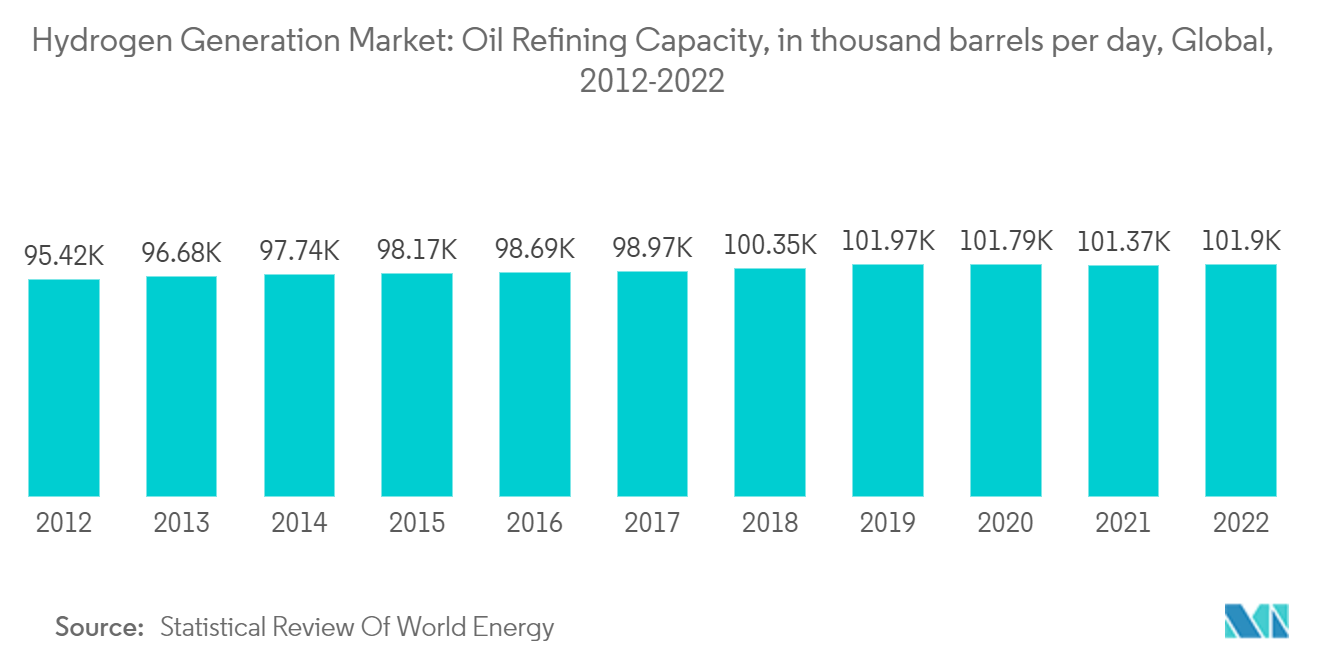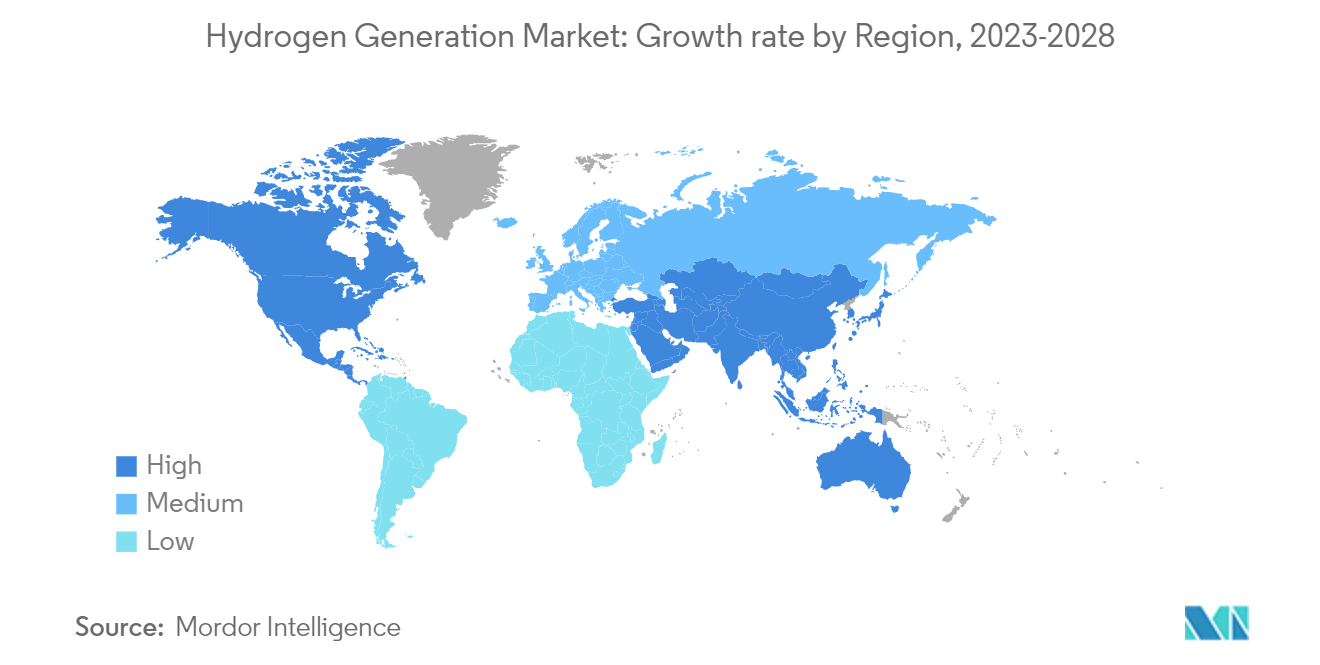Market Trends of Hydrogen Generation Industry
Oil Refining Segment Expected to Dominate the Market
- The use of hydrogen in oil refining is indispensable. Oil refineries are used to remove sulfur from the fuels they produce in a chemical separation process called hydro desulphurization. It is also used for hydro-cracking and reforming processes in oil refineries. Reforming is the process of removal of sulfur compounds from petroleum to obtain high-grade fuel, thus reducing air pollution. Hydrogen is added to crude oil and oxygen to deliver refined petroleum products (e.g., diesel, LPG, and gasoline).
- According to the Energy Institute Statistical Review of World Energy, the oil refining capacity witnessed a growth rate of 0.5% between 2021 and 2022, whereas the annual growth rate in the last decade was 0.7%. The oil refining capacity is expected to follow the growth trend in the coming years due to various upcoming projects in the Asia-Pacific region. The market's growth is also expected to be driven by the demand for cleaner fuels, government regulations for the desulfurization of petroleum products, and the general decline in crude oil quality. As the rate of crude decreases, the volume of hydrogen required for the refinement process increases to maintain the quality of end products.
- As per the information provided by the US Energy Information Administration, there are at least nine refinery projects in Asia and the Middle East that are in the process of commencing operations or were slated to become operational by the conclusion of 2023. These projects, based on their intended capacities, are expected to contribute an additional 2.9 million barrels per day (b/d) to the global refinery capacity when they reach full operational status. Thus, this is anticipated to drive the demand for hydrogen generation during the forecast period.
- The pace and refinery investments continue to follow the increase in the oil demand. In the International Energy Agency's (IEA) June 2022 Oil Market Report, the IEA expects net global refining capacity to expand by one million BPD in 2022 and by an additional 1.6 million BPD in 2023, which is expected to increase the demand for hydrogen generation during the forecast period.
- Moreover, by investing in technologies that reduce the carbon footprint of hydrogen production, such as carbon capture and utilization, the oil refining segment can align with global sustainability objectives and proactively influence the role of hydrogen as a green energy source.
- For instance, in February 2023, the leading Indian oil company, Indian Oil Corporation (IOC), embarked on a green transformation strategy worth INR 2 trillion, with the aim of achieving net-zero emissions from its operational activities by 2046. As part of this initiative, Indian Oil Corporation plans to establish green hydrogen facilities at all of its refineries.
- Therefore, as per the points mentioned above, the refinery segment is expected to dominate the market during the forecast period.

Asia-Pacific Region Fastest Growing Market
- The Asia-Pacific region has emerged as a pivotal player in the global hydrogen generation market, with countries like China, India, Japan, and South Korea at the forefront of this rapidly evolving industry. This dynamic shift can be attributed to several factors, including the increasing demand for clean and sustainable energy sources and the region's commitment to reducing carbon emissions and achieving ambitious climate goals.
- These countries' strategic initiatives, comprehensive research, and concerted efforts make the Asia-Pacific hydrogen generation market a hub for innovation and investment. The Asia-Pacific hydrogen generation market is characterized by a diverse range of technologies and projects aimed at harnessing the potential of hydrogen as a clean energy carrier.
- In 2022, the Chinese government unveiled its inaugural long-range blueprint for hydrogen, outlining the period spanning from 2021 to 2035. As per the most recent government blueprint, China aims to manufacture between 100,000 and 200,000 tons of renewable hydrogen each year and establish a fleet of 50,000 hydrogen-powered vehicles by 2025.
- Similarly, India's pursuit of green hydrogen is marked by various initiatives, both at the governmental and private sector levels. The government has introduced several policy measures and incentives to encourage green hydrogen projects and infrastructure development. The National Hydrogen Energy Mission (NHEM), launched by the Indian government, outlines a roadmap for hydrogen production, storage, and utilization.
- Several companies and research institutions are engaged in pilot projects and partnerships to assess the viability of hydrogen production. The country’s comprehensive approach, combining green and blue hydrogen initiatives, aligns with its commitment to lowering carbon emissions throughout the hydrogen supply chain.
- For instance, in May 2023, the Tokyo Tech InfoSyEnergy Research and Education Consortium, in collaboration with the Tokyo Tech Academy of Energy and Informatics, introduced a fuel cell capable of producing electricity using a combination of hydrogen and hydrogen derived from waste plastic materials.
- Therefore, as per the points mentioned above, the Asia-Pacific region is expected to witness significant growth during the forecast period.

